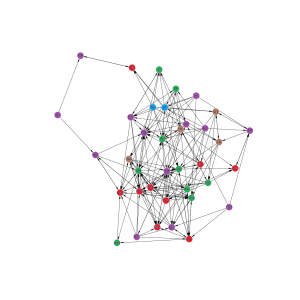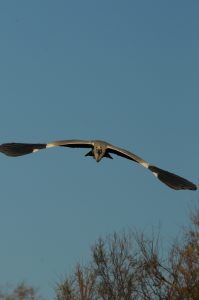Scientific hypotheses and position
Ecology is in crisis! This young discipline, as successful and productive as it has been lately, is still unable to comprehend the functioning of its main object of study: the ecosystem. Ecosystems are complex combinations of living (biotic), inert (abiotic) and human (anthropic) components constantly interacting in space, in time and on many different scales (see videos). Ecology is currently lacking a comprehensive theory to explain and predict ecosystem functioning (see the publications’ page). Concepts and tools are missing to answer questions such as: How are biodiversity and ecosystem related? Are ecosystems evolving? How are the human activities impacting the ecosystem dynamics? How to find our right place in ecosystems?
Watch a recent interview on YouTube! My first intuition is that we usually adopt a biased and short term view, always focusing on specific elements. For example, ecologists often study species communities, although species only concern the biotic components of an ecosystem(Fig. 2). Sociologists and economists study the human related components of the ecosystems, reducing non-human species or resources to a single broad component. Hydrologists, physicists and geomorphologists study the cycles of elements, landscape changes and related physicochemical processes. We have today a vast knowledge of most of these components and processes, so it is about time to take into consideration all of it to develop a coherent and comprehensive vision.
I recently suggested such a global framework for this purpose. I think every ecosystem possesses a skeleton made of all its material components interacting into a large interaction network called the discrete ecosystem network (Fig. 1 and this YouTube video). This network is conveniently handled and visualized by a graph which topology is critical and drastically changing over the long term (Fig. 3). This graph combines nodes (the components) and edges (the processes), whatever their natures, from physicochemical transformations (e.g. water or C cycles), bio-ecological (e.g. species interactions) and socio-economic (e.g. trading or power conflicts) processes. I proposed to call this conceptual framework the language of ecosystems.
 |
 |
 |
| Figure 1. Example of a Social-Ecosystem network, representing the inner structure of the Camargue delta (CC BY-SA 4.0). | Figure 2. Grey Heron pictured in Camargue (photo C. Gaucherel CC BY-SA 4.0). | Figure 3. Example of computed dynamics of a Social-Ecosystem (Camargue delta) using a discrete-event model (CC BY-SA 4.0). See refs. |
To handle such a complex graph, summarizing the ecosystem structure and its long term changes, I suggest building a new kind of models borrowed from theoretical computer sciences: the discrete event models (Fig. 3). Such models are dedicated to graph handling, in particular when they are qualitative (Boolean nodes) and discrete (rule-based dynamics). This allows to provide a rigorous (mathematical) framework to formalize any ecosystem change, whatever the ecosystem type (e.g. terrestrial or aquatic, temperate or tropical, anthropogenic or not).
Ultimately, these powerful models are more than a simple method applied to this complex object. They are the methodological declination of a recently proposed theory of the living systems. I formulate the hypothesis that any living system gathers a kind of information handled by a specific language. This is not only a metaphor since such languages are formally identified by the qualitative and discrete models previously cited, and allow to rigorously identify their specificity. They are based on the informational content in each (eco)system network (Fig. 1). In this broader context, ecosystems may be viewed as “almost alive” systems.
Personal view on research
In my opinion, gender and ecological issues are critical today in our research activity. Most colleagues of mine are women (estimated = 68%). And I also take care to compensate Carbon most of our activities in my team. Our early ANR project INC (ANR blanc 2007-2011, co-dir C. Hély EPHE) was the first fully compensated Carbon project thanks to a deep collaboration with the Junglesscapes NGO. My personal ecological footprint is estimated at 6.12 tCO²/yr (according to the WWF calculator).
